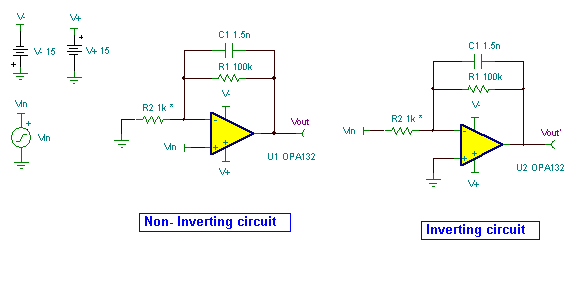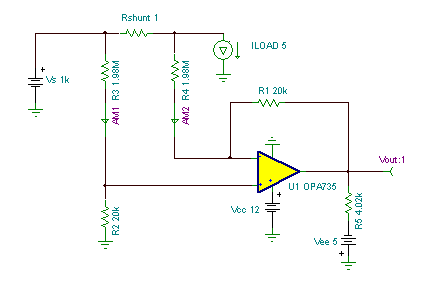Feedback Capacitor Low-Pass Filter Pitfalls
Adding a capacitor in parallel with the feedback resistor of an op amp is an easy way of accomplishing low- pass filtering. This technique works quite well in an inverting amplifier (see the curves below) but not necessarily in a non-inverting amplifier. If the NI amplifier has high gain, the filtering is not bad– but inferior to the inverting case. As the NI amplifier gain is reduced, the filter effectiveness suffers. In a gain of +2V/V, there is only 6dB of stopband attenuation. In a voltage-follower (gain of +1V/V), there is no low- pass filtering at all! In each amplifier, the value of R2 was stepped logarithmically from 100 ohms to 100k.\e(x,2) (Circuit is created by Neil P. Albaugh, TI-Tucson )
Circuit for Demonstration of Pitfalls related with the Feedback Capacitor in Low-pass Filters

Demonstration of Pitfalls related with the Feedback Capacitor in Low-pass Filters circuits
The great feature of the TINA circuit simulator that you can analyze this circuit immediately with TINACloud the online version of TINA.
Click here to invoke TINACloud and analyze the circuit yourself, or watch our tutorial video to learn how to create and analyze this circuit with TINA off-line version now under Windows 10 or on-line with TINACloud.
You can send this link to any TINACloud customers and they can immediately load it by a single click and then run using TINACloud.
Download the FREE trial demo of TINA Design Suite and get
- One year free access to TINACloud (the cloud-based, multi-language, installation-free online version of TINA now running in your browser anywhere in the world.)
- An immediate 20% discount from the offline version of TINA
- Free license for your second computer, laptop etc.
Michael Koltai
www.tina.com

